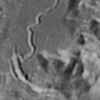
Imaging Newts... What's > AT but < Powernewt?
#1

Posted 23 November 2012 - 10:39 AM
I'm wondering though, are there many other imaging newts out there that fall between these two?
Anyone know how the two BS and AT compare when it comes to optics? I'd have to assume the BS has a better mirror that lets it get to F2.8.
#2

Posted 23 November 2012 - 10:55 AM
David
#3

Posted 23 November 2012 - 11:19 AM
As for camera spacing, it seems like you only have to get that right to start with and then image away.
#4

Posted 23 November 2012 - 01:10 PM
I have been researching this topic too as I would like a 6" very fast imaging scope. I think theoretically one could use the AT6in with a reducer/coma corrector. Unfortunately the only one that I could find is the ASA which comes at a premium. TS makes a SCT corrector and0.8 reducer. They say is corrects coma and field curvature but it's designed for Schmidt Cassegrain telescopes not for newtonians.
I am interested in what your finds are.
Andy
#5

Posted 23 November 2012 - 02:50 PM
I understand the collimation part and it is a concern, but if you want a scope this fast, there are few options.
As for camera spacing, it seems like you only have to get that right to start with and then image away.
You're correct about both. I just mentioned the spacing because many applications can be fairly forgiving, but this one is not. It is 65mm and you want it to be 65mm with little wiggle room.
David
#6

Posted 25 November 2012 - 12:49 PM
But the these have focal lengths (and thus field curvatures) of 450 mm to 800 mm, and I calculate that the sagitta across a 12 mm sensor is larger than the depth of focus by a factor for 1.5 (8") to 3 (4.5").
It would seem that getting an in-focus image across a modest sensor chip is impossible without something to flatten the field. Paracorrs allegedly do this for scopes 1200mm and larger, but would perhaps not help much with these very short focal lengths. There also seem to be no field flattener products marketed specifically for Newtonians.
#7

Posted 25 November 2012 - 03:12 PM
David
#8

Posted 25 November 2012 - 04:40 PM
Andy
#9

Posted 26 November 2012 - 10:54 AM
#10

Posted 27 November 2012 - 09:19 AM
http://www.teleskop-...info/p4685_A...
Andy
#11

Posted 27 November 2012 - 09:48 AM
I have been wondering about that. According to ASA their Keller corrector can be used with any newtonian between f3.5 and f5 so it should work with the AT8in. Even more interesting for me would be how it works with the at6in.
http://www.teleskop-...info/p4685_A...
Andy
I dont think I've heard of a single report positive or negative.
#12

Posted 27 November 2012 - 10:24 AM
Andy
#13

Posted 28 November 2012 - 01:11 AM
I don't think I've heard of a single report positive or negative.
I use a 3" ASA coma corrector in a 300mm f/4 GSO newtonian. (i.e from the same factory as both Astrotech and Powernewt). I'm 100% happy with the results. Here are some of my images:
LINK
As for the 2 inch version, the spot diagrams and vignetting graphs are available on the ASA website. Please study them closely. LINK
From what I have seen, I would expect the optical and build quality would be excellent.
The Baader MPCC would be a more cost effective option and I've seen a lot of good results from it too.
Putting the equipment element aside, you will still need to put in a lot of effort to get good images - guiding, focus & collimation come to mind.
James
#14

Posted 28 November 2012 - 08:54 AM
Is yours only a coma corrector or also a reducer? The 2" ASA is also a .73 reducer. That would bring the system down to f/2.92. Super fast!
Andy
#15

Posted 28 November 2012 - 10:20 AM
I have been puzzling about the small fast Newtonians sold for imaging purposes - Orion and Astrotech offer a variety of F/4-ish Newtonians for this purposes in sizes from 4.5 inches to 8 inches.
But the these have focal lengths (and thus field curvatures) of 450 mm to 800 mm, and I calculate that the sagitta across a 12 mm sensor is larger than the depth of focus by a factor for 1.5 (8") to 3 (4.5").
It would seem that getting an in-focus image across a modest sensor chip is impossible without something to flatten the field. Paracorrs allegedly do this for scopes 1200mm and larger, but would perhaps not help much with these very short focal lengths. There also seem to be no field flattener products marketed specifically for Newtonians.
I am glad you brought this up, because I was confused here as well. What I found (IIRC) from doing some research a long time ago, is the following: For two telescopes of the same design the field curvature is proportional to the focal length, but that relationship does not hold true for scopes of different design. From what I remember a refractor has four times the field curvature as a newtonian reflector with the same focal length; therfore, imaging newts typically don't need a field flattener unless the focal length is very small. And that is why you very often see flatteners built for refractors, but not very often made or sold with newts.
So my question is: am I correct here in my understanding?
#16

Posted 29 November 2012 - 09:35 AM
http://starizona.com..._curvature.aspx
As you can see, a 4" f/10 refractor with a 1000mm focal length would have much more severe field curvature (375mm radius) than an 8" f/4 newt (800mm radius). So the refractor has much worse field curvature even though is has a longer focal length.
The main issue with an imaging newt is coma, and there are several coma correctors that can take care of that depending on how fast the scope is. The key is to get the distance to the chip correct for optimum performance.
#17

Posted 01 December 2012 - 01:31 PM
#18

Posted 07 December 2012 - 07:50 PM
#19

Posted 09 December 2012 - 07:54 PM
#21

Posted 09 December 2012 - 11:11 PM
#22

Posted 09 December 2012 - 11:25 PM
#23

Posted 10 December 2012 - 02:18 AM
#24

Posted 10 December 2012 - 10:39 AM
Even if they are both GSO newts, it seems like they upped the specs of the Powernewt. At least that's what their specs imply.
I've seen some of the creators images in the CCD forum and they are impressive, but it's hard to tell if they are any better or worse then those taken with the At8in. But I believe them that it's at f2.8, and that means more signal per night.
#25

Posted 10 December 2012 - 11:15 AM
Unfortunately I won't be able to use mine for a few weeks at least due to the notorious NW weather.
My ultimate goal is to shoot at ~f2.8. The question is: should I invest on a fast newtonian or should I just bite the bullet and get either a Tak Epsilon or one of the Officina Stellare telescopes? The Epsilon might be the way to go and it would be cheaper than the OS.
























